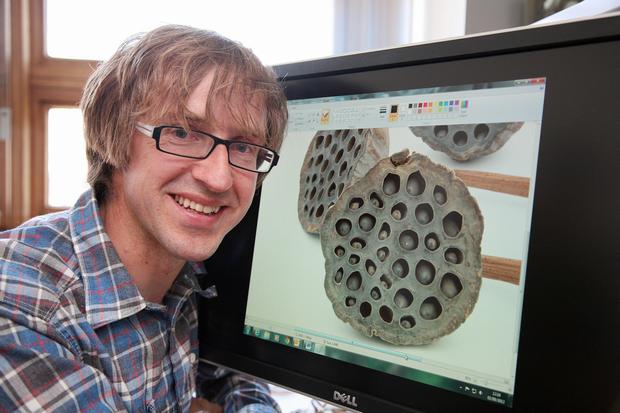If the sight of aerated chocolate or a lotus flower seed pod bring you out in a cold sweat and make you feel panicky, you could be one of many on the Internet claiming to have one of the most common phobias you have never heard of; trypophobia, the fear of holes. For trypophobes, the sight of clusters of holes in various formations can cause intensely unpleasant reactions, from serious migraines and panic attacks to hot sweats and increased heart rate.
Is it a real thing? Trypophobia has been widely claimed by people on the Internet, but even Wikipedia called an entry on the topic a hoax before a bunch of other claims on the Internet convinced anonymous non-experts there it was real and they kept it.

Dr. Geoff Cole. Credit: University of Essex.
Regardless, in a study, Essex psychologists found that 16 percent of participants reported trypophobic reactions. Cole says he also suffers from trypophobia and decrees it as “the most common phobia you have never heard of."
The project involved establishing if there was a specific visual feature common to trypophobic objects. They compared 76 images of trypophobic objects (obtained from a trypophobia website) with 76 control images of holes not associated with trypophobia. After standardizing various features of the images, the researchers found that the trypophobic objects had relatively high contrast energy at midrange spatial frequencies in comparison to the control images. They had the same visual structure as stripes, which also cause migraines for some people.
The psychologists then wanted to find out why this unique visual feature led to such aversive reactions. One trypophobia sufferer provided Cole with a clue - he had seen an animal that caused him to experience a trypophobic reaction. The animal in question, the blue-ringed octopus, is one of the most poisonous animals in the world, which led Dr Cole to a “bit of a Eureka moment”.
He and Wilkins examined images of various poisonous animals, including the blue-ringed octopus, deathstalker scorpion, king cobra snake, and other poisonous snakes and spiders and found that they, too, tended to have relatively high contrast at midrange spatial frequencies.
The scholars at Essex speculate that trypophobia may have an evolutionary basis – clusters of holes may be aversive because they happen to share a visual feature with animals that humans have learned to avoid as a matter of survival.
“We think that everyone has trypophobic tendencies even though they may not be aware of it,” said Cole. “We found that people who don’t have the phobia still rate trypophobic images as less comfortable to look at than other images. It backs up the theory that we are set-up to be fearful of things which hurt us in our evolutionary past. We have an innate predisposition to be wary of things that can harm us."
As for a cure for trypophobia, Dr Cole suggests what worked with him – he looked at the images so often he became desensitized to them.
Citation: Geoff G. Cole and Arnold J. Wilkins, 'Fear of Holes', Psychological Science August 27, 2013 doi: 10.1177/0956797613484937





Comments